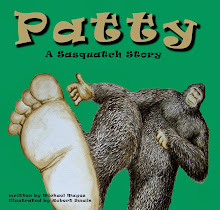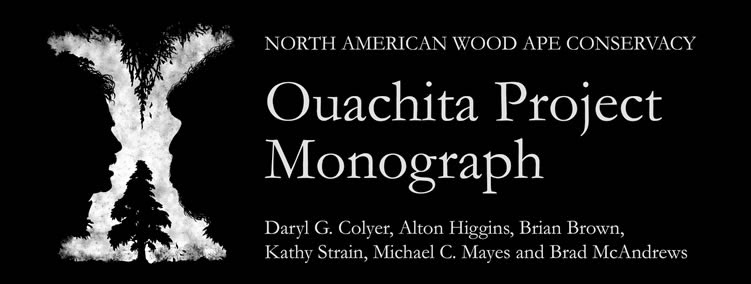With thousands of game cameras out there, if bigfoot is real, why are there no pictures?
The question above is one I have heard countless times over the years. Make no mistake, it is a fair question and I have no problem with anyone who asks it. On the surface, the fact that no clear and conclusive photos have been captured via game camera would seem to indicate that the wood ape does not exist. The real answer as to why game cameras have failed to get the “money shot,” however, may not be quite so simple. As seems to be the case with almost everything related to the sasquatch enigma, the truth may be more nuanced and layered than one might expect.
In 2003, a team from the University of Nebraska published a paper titled Wariness of Coyotes to Camera Traps Relative to Social Status and Territory Boundaries. The paper detailed an aversion that Alpha coyotes seemed to have regarding game cameras. The study took place in the Dye Creek Preserve in the foothills of the Cascade Mountains of California which was closed to the public. The authors thought the coyote population in this area would make good subjects for their study due to their extremely limited exposure to humans. “Coyotes on the preserve were not hunted and generally represented an unexploited population,” the authors wrote. The results of their study were fascinating.
The study found that the dominant coyotes, the Alphas, were never photographed inside their territories during the three years the game cameras were in place. Not one time. The authors concluded that this was not due to the animals having left the area as Betas and transient coyotes, thirty-eight in all, were successfully photographed by the cameras and Alphas were observed via more traditional means in their territories. Instead, the authors felt the lack of photos of the Alphas had to do with an increased level of awareness and caution on the part of the dominant pack members. “Alphas are probably the only coyotes that are truly territorial in terms of defending and fully exploiting their space,” the authors said. The Alphas regularly traversed their entire territories and “actively tracked human activity within their territories and presumably gained information about camera stations as they were being set up.” The final conclusion was the Alphas “were cautious of camera stations because of their association with humans and not simply because they were novel.”
The conclusion that Alpha coyotes avoided game cameras because they associated them with humans is one that has real ramifications for those attempting to gain photographic evidence of the wood ape by the use of such devices. The NAWAC conducted a large-scale camera-trapping project dubbed Operation Forest Vigil from 2006 – 2011. Despite hundreds of man hours and thousands of dollars spent on the effort, no definitive photos of the target species were captured. The thinking was that apes might avoid the cameras for a few days or weeks after their initial deployment, but get used to them over time. The lack of results and the findings of the University of Nebraska biologists caused the group to reconsider that opinion and the project. If the apes were avoiding the cameras due to associating them with humans and not because they were something new and out of place – like the Alpha coyotes in the University of Nebraska study – then the group was very likely wasting its time and money.
Coyotes are one thing, apes are another. How can we be sure that apes are as wary of cameras as Alpha coyotes? A recent study conducted by the Max Planck Institute of Evolutionary Anthropology shed some light on that question. According to a paper published in March of 2019, an international team of researchers placed cameras in ape-populated forests in Africa in an effort to learn how wild apes would react to these unfamiliar objects. Responses varied by species, and even among individuals within the same species, but one thing was consistent throughout: the apes definitely noticed the cameras.
“Our goal was to see how chimpanzees, bonobos, and gorillas react to unfamiliar objects in the wild since novel object experiments are often used in comparative psychology research, and we wanted to know if there were any differences among the three great apes,” said primatologist Ammi Kalan. “We were specifically surprised by the differences in reactions we observed between the chimps and bonobos. Since they are sister species and share a lot of the same genetic makeup, we expected them to act similarly to the camera, but this wasn’t the case.” The chimps, though they noticed the cameras, seemed uninterested, for the most part. The bonobos, on the other hand, were stressed by the devices. “The bonobos appeared to be much more troubled by the camera traps; they were hesitant to approach and would actively keep their distance from them,” said Kalan.
The experiment pointed out the necessity of researchers to consider how animals will respond to unfamiliar monitoring equipment – I would include audio recording devices under this umbrella, too –in their natural habitats. The variation in behavior from species to species towards unfamiliar objects placed in their environment “might be problematic when trying to collect accurate monitoring data,” said Kalan. In other words, there may be no such thing as truly passive observation. The mere presence of a camera or a recorder may alter the behavior of the target species.
Many researchers, me among them, have long held the belief that wood apes avoid camera traps. Do not misunderstand, I do not think an ape knows what a camera does and makes a conscious effort to avoid having its picture taken. That is foolishness. I do, however, think it is possible – likely even – that these wood apes associate cameras with humans. If they understand, even on an extremely rudimentary level, that humans are generally bad news, and if they are more bonobo-like than chimpanzee-like in their sensitivity to foreign objects in there environment, then they are likely going to go to great pains to avoid anything to do with them; that would include camera traps.
Despite this belief, I am still a proponent of the use of game cameras. I feel short of a hunter taking a specimen or a road-kill type of scenario, cameras remain our best chance of documenting the species. I also feel that despite the challenges, a large-scale camera project sponsored by a well-funded group with sufficient resources just might be able to capture the evidence desired. What must be understood is that just hanging a camera on a stake or a tree is not going to be good enough when the quarry is something as intelligent as a great ape. New and novel techniques will need to be utilized to have any chance of success. Another reason I remain a proponent of game cameras is that these creatures are not infallible. They do make the occasional mistake. Researchers can do the wrong thing, be too loud, fail to camouflage their cameras, etc. day after day for years. That is okay; there is always tomorrow. The wood ape has to be perfect every day in order to permanently avoid detection. That is simply not possible, not even for an animal as furtive and elusive as the sasquatch. One mistake. That is all it will take for the discovery of the millennium to be made. The question really is not whether or not the wood ape will make a mistake; one will. The question is will there be anyone or a monitoring device present to capitalize on said mistake?
If you are the type to get into discussions over cryptozoological-related matters – and you likely are considering you are reading this – file the findings of the University of Nebraska biologists and the researchers of the Max Planck Institute away for future conversations. The question of why no photos have been captured by game cameras is bound to come up eventually. Along with the most common response – and quite a valid one, in my opinion – stating that most game cameras are pointed at deer feeders that are not too deep into the woods, bring up the possibility, backed by scientific studies, that some animals simply avoid cameras due to their association with humans. You will come across as well-read, reasonable, and intelligent.
You will also be right.
Sources:
“Wild African Ape Reactions to Novel Camera Traps.” ScienceDaily, ScienceDaily, 14 Mar. 2019, www.sciencedaily.com/releases/2019/03/190314111015.htm.
Sequin, E.S, et al. “Wariness of Coyotes to Camera Traps Relative to Social Status and Territory Boundaries.” Digital Commons @ University of Nebraska-Lincoln, USDA National Wildlife Research Center - Staff Publications, Mar. 2003, digitalcommons.unl.edu/cgi/viewcontent.cgi?referer=http://woodape.org/index.php/about-bigfoot/articles/190-cryptidcaution&httpsredir=1&article=1227&context=icwdm_usdanwrc.
Higgins, Alton, and Daryl Colder. “Cryptid Caution Concerning Cameras?” Cryptid Caution Concerning Cameras?, woodape.org/index.php/about-bigfoot/articles/190-cryptidcaution.













